Table of contents
Dried or dehydrated bananas ( Musa × paradisiaca ) are very popular as a snack. They are available in stores as hard banana chips (crunchy) as well as softer, dried banana pieces. If the dried bananas have a brownish color, no sulfur has been added.
Use in the kitchen
Due to the removal of water, the nutritional and energy density in dried bananas is more concentrated than in fresh bananas. 3 Banana powder has an even lower water content. 19 The taste of dried bananas is usually more intense and sweeter than that of fresh bananas .
You can simply nibble on dried bananas as a healthy snack between meals or use them in a variety of ways when cooking and baking. They are ideal as an ingredient in tasty smoothies, chutneys, fruit salads, muesli ( pea muesli ) and desserts . However, you should still choose fresh bananas if possible.
When we talk about banana chips, we usually mean sliced, fried in oil and dried (sometimes unripe) bananas. Preservatives and sweeteners are often added. These are often part of trail mix.
The banana chips (upperi) known in India are roasted in coconut oil and coated with masala (Indian spice mixture) or jaggery (unrefined cane sugar ). Some banana chips are also made from plantains, the starchier bananas.
Making your own dried bananas
You can easily make your own dried or dehydrated bananas. You need a knife, baking paper, an oven or a dehydrator, about 5 fresh bananas (organic, raw) and 1/2 lemon. The bananas should be ripe, but not overripe.
First, peel the bananas, cut them into slices that are as thin as possible (approx. 5 mm) and place them on a baking tray lined with baking paper. Alternatively, you can dry them by cutting them lengthways. Tip: If you sprinkle lemon juice on the banana slices, they will turn less brown later. Don't use too much lemon juice, otherwise they will taste sour later.
The maximum temperature for drying bananas should be around 40 °C. At higher drying temperatures, valuable vitamins are lost. During drying in the oven, the door should be slightly open so that the moisture can escape easily. The drying times depend on the temperature, the thickness of the banana slices and the desired degree of dryness. For thinly sliced slices, the process takes 6-12 hours with good air circulation, for halved bananas it takes one to two days. The already cooled banana chips should be packed airtight and stored in a dry place. If the bananas are still soft, it is recommended that they be consumed within the next few days. Depending on the remaining water content, dried bananas can be kept for up to a year.
If you want to dry bananas more often, we recommend buying a dehydrator. It uses less energy and usually has a 'raw food' function. This allows you to dehydrate fruit, or vegetables and herbs, at low temperatures.
Sun-dried bananas are only available in tropical areas where temperatures are constant. The bananas should be protected from vinegar flies.
Vegan Banana Chip Cookies Recipe
Ingredients: 350 g banana chips (or dried bananas), 500 g flour, 250 g liquid honey, 1 tsp cocoa powder, 1 tsp ground cinnamon, 1 tsp baking powder, water if needed.
Preparation: Preheat the oven to around 180°C. Chop the banana chips (to do this, put them in a bag and use a wooden mallet to beat them into small pieces). Then add the flour, baking powder, cocoa powder and cinnamon to the chopped banana chips. If the honey is not liquid, you can warm it up a little. Mix the liquid honey with the flour mixture and knead into a dough by hand. If necessary, add a dash of water. It is important that the dough does not stick, otherwise you will have to add a little more flour. Now form small balls with your hands and press them flat on the baking tray lined with baking paper. Bake the cookies in the hot oven for 10-12 minutes, remove and allow to cool.
Vegan recipes with dried bananas can be found under the note: " Recipes that have the most of this ingredient ".
| Not only vegans or vegetarians should read this: Vegans often eat unhealthily. Avoidable nutritional errors . |
Purchasing - Storage
Only selected stores from the following supermarket chains - Coop, Migros, Denner, Volg, Spar, Aldi, Lidl, Rewe, Billa, Edeka, Hofer and organic supermarkets Denn's Biomarkt and Alnatura - offer dried bananas. Most often you will find banana chips that have been fried in coconut oil, less often whole dried bananas. Industrially dried bananas are often treated with sulphur dioxide so that they retain their light, yellowish colour and have a longer shelf life. The often added granulated sugar is unnecessary as dried bananas naturally contain a lot of fructose and therefore taste sweet.
Sometimes freeze-dried banana pieces or chips made from bananas are available that are not enriched with sulphur, oil or sugar. However, they still retain their colour when processed in this way. On the other hand, the term "dried bananas" always means that they are air-dried bananas.
Prefer natural, i.e. naturally produced, unfried, unsweetened and unsulfured dried bananas. You can find these in health food stores, organic shops or in online shops.
Dried bananas are available all year round . When buying, you should also look for controlled organic quality, as this guarantees fewer pollutants. Organic dried fruits must not contain any preservatives such as sulphur, methyl bromide, sorbic acid etc., but conventional ones do. 2,13
The availability of dried or dehydrated bananas varies depending on the size of the store, catchment area, etc. You can find our recorded food prices for the DA-CH countries above under the ingredient image - and by clicking you can see their development at various suppliers.
Storage tips
Dried bananas can be stored for a long time in a closed container in a dry, cool and dark place. If dried well, dried or dehydrated bananas can even be kept for many years.
Ingredients - Nutritional values - Calories
100 g of dried bananas contain 301 kilocalories (kcal). The carbohydrates make up 71%, sugar makes up around 56% andfiber 6.4%. Proteins are rather sparse at 3.7% and fat is almost non-existent at 0.58%. The nutritional information refers to products without added fat and sugar. 3
The water content of fresh bananas is 75% and is reduced to 20% by drying. Banana powder contains 3% water. 3,19 Compared to the fresh product, the nutrient content in dried bananas is therefore significantly more concentrated.
Pyridoxine (vitamin B6 ) is present in good quantities in dried bananas at 0.93 mg. Dried herbs such as parsley or oregano have equivalent amounts. Dried shiitake also has 0.93 mg/100g. This water-soluble vitamin is important for enzymatic reactions and protein metabolism. 3
Our body needs the macro element potassium to maintain the osmotic pressure in the cells. Dried bananas contain 1183 mg/100g of potassium. The content is very similar to that of the dried herbs mentioned above. Legumes such as white beans also have a high potassium content (1795 mg/100g). 3
Magnesium is required for enzymatic metabolic processes. The magnesium content in 100 g of dried bananas is 97 mg and is comparable to leafy vegetables such as chard (81 mg) and spinach (79 mg). Seeds and nuts such as hemp seeds (700 mg), linseed (392 mg), sesame (351 mg), sunflower seeds (325 mg) and pseudocereals such as buckwheat (231 mg) and quinoa (197 mg) have significantly higher magnesium contents. 3
Dried bananas have about 0.83 mg of manganese per 100 g. Dried mushrooms (e.g. porcini mushrooms ) have comparable values (0.8 mg). This trace element is important for the development of cartilage and connective tissue. Wheat germ contains larger amounts at 13 mg/100g. 3
The vitamin C content (28 mg/100g) in dried bananas is also worth mentioning. However, dried herbs sometimes have a much higher value: e.g. rosemary 61 mg, wild garlic 178 mg and coriander leaves even 567 mg/100g. 3
The complete ingredients of dried bananas, the coverage of the daily requirement and comparison values with other ingredients can be found in our nutrient tables. In the article Nutrients explained you will get a detailed insight into the topic.
Effects on health
In small quantities, sweet, dried bananas are ideal energy bombs. Dried bananas are also an excellent snack for sporty people or those who exercise a lot every day or do physical work, as the body uses carbohydrates as its main source of energy. However, dried fruit should never replace fresh fruit, only supplement it.
The high potassium content of bananas can have a positive effect on the heart and circulation. Potassium, an important electrolyte, helps maintain fluid balance, nerve function and muscle contraction. 23
Bananas promote intestinal health. Thanks to the fiber, natural starches and polysaccharides in the pulp, eating bananas can regulate bowel movements. Results from scientific studies show that green bananas are said to relieve diarrhea due to their increased non-digestible pectin content. 21 Whereas ripe bananas have been proven to reduce constipation due to the naturally contained fructooligosaccharides. 22 Bananas act as a prebiotic because the fiber is food for the good bacteria in the large intestine. 20
For a more detailed version of the health effects of bananas, see raw bananas .
Secondary plant substances
Many of the health effects of dried bananas can be attributed to the secondary plant substances they contain. Our article on secondary plant substances provides an overview of the classification of substance groups, their occurrence in foods and possible effects on humans. Dried bananas contain the following secondary plant substances, among others:
- Isoprenoids: Triterpenes: Steroids (24-methylenecycloartanol,beta-sitosterol, stigmasterol, campesterol, cycloartenol, cycloeucalenol); Tetraterpenes: Carotenes (alpha-carotene, beta-carotene), xanthophylls (auroxanthin, cryptoxanthin lutein, neoxanthin, violaxanthin) 14
- Polyphenols: Phenolic acids: hydroxybenzoic acids (salicylic acid, gallic acid, p-hydroxybenzoic acid, vanillic acid, syringic acid, gentisic acid), hydroxycinnamic acids (chlorogenic acid, ferulic acid, sinapic acid, p-coumaric acid); flavonoids: flavanols (catechin, gallocatechin), flavanones (naringenin), flavonols (quercetin, myricetin, kaempferol, rutin), anthocyanins (cyanidin); tannins (ellagic acid) 14,16
- Nitrogen-containing compounds: biogenic amines (serotonin, dopamine, norepinephrine) 16
- Other organic compounds: Hydroxycarboxylic acids (tannic acid) 14
However, it should be noted that the composition of secondary plant substances in dried bananas can vary depending on the variety, time of harvest and growing conditions. Therefore, quantities are only of limited use and should only be understood roughly.
Researchers in Thailand have investigated how the content of secondary plant substances in bananas changes during drying. Sun drying reduced the total flavonoid content and that of phenolic acids by 65% and 67% respectively. The dopamine content also shrank as a result of drying. In the study, the content of secondary plant substances was measured in the dry matter. 14 This means that, despite the loss of bioactive substances during processing, the secondary plant substances in dried bananas should be more concentrated than in the fresh product.
The dried banana has antioxidant properties. Antioxidants protect against reactive oxygen compounds that could damage the cell membrane or DNA. The bioactive components thus delay the aging process, prevent coronary heart disease, cancer and neurodegenerative disorders. The most common antioxidants in bananas are carotenoids (alpha and beta carotene), phenolic acids (including ferulic acid), flavonoids (e.g. quercetin) and ascorbic acid . 16 In terms of quantity, a diet containing fruits, vegetables, tea, wine, grains and seeds provides the highest intake of the flavonoid quercetin, which has anti-inflammatory and antioxidant properties. 14
Carotenoids support the immune system and prevent chronic diseases such as diabetes. The alpha and beta carotene contained in bananas is also known as provitamin A because the body can convert it into vitamin A. 16
Various banana extracts, including ferulic acid, cycloeucalenol and chlorogenic acid, have shown cancer-preventive and anti-cancer effects. Since the results are based on in vitro experiments and in vivo animal studies, only limited conclusions can be drawn about the effect on humans. Further research is needed. 17
Dried bananas have an effect on our psyche because they contain biogenic amines, including dopamine, norepinephrine and serotonin. Dopamine plays an important role in the human brain and body as a neurotransmitter and has a major influence on our mood, ability to concentrate and emotional stability. 16,18
Dangers - Intolerances - Side effects
Dried bananas have a significantly higher fructose and therefore energy content than fresh bananas. If consumed in large quantities, this can lead to flatulence or diarrhea, especially with banana chips, as these are often processed unripe. This means significantly more indigestible starch. Only enjoy dried bananas and other dried fruits in small quantities and prefer fresh fruit.
Sulphurized dried fruits can cause reactions in people with allergies, sensitive people or people who lack the enzyme sulfite oxidase. Sometimes severe intolerance reactions are possible, such as asthmatic reactions when eating foods containing sulfur dioxide or sulfite. 4
Most people with fructose intolerance have a relatively poor tolerance for dried or dehydrated bananas. Fresh bananas, on the other hand, are often better tolerated. 5,9,24
There are two known forms of allergic reaction to bananas. The first form is oral allergy syndrome, which can trigger pollen from birch or other plants and cause itching and swelling in the mouth or throat within an hour of eating the banana fruit. The second form is related to latex allergy and causes hives, abdominal pain, vomiting and sometimes life-threatening symptoms. 25
Ecological footprint - animal welfare
The production chain from the banana plant in the field to the dried banana chips on the supermarket shelf has an impact on the ecological environment. The CO 2 footprint is a key figure that shows the emission of climate-damaging gases along the value chain and aims to make it comparable with other foods. If you buy a kilo of fresh bananas in Germany, they cause 0.6 kg CO 2 equivalents according to the Institute for Energy and Environmental Research in Heidelberg . 27 However, this does not include the drying process. According to Carboncloud, freeze-dried bananas have a CO 2 footprint of 9.25 kg CO 2 eq/kg. Although the transport route from Ecuador to Germany seems long, the processing, i.e. the drying of the fruit, is the main cause of the climate-damaging gases at 64%. 26
The sustainability of a food can also be determined by its water consumption. The production of fresh bananas requires an average of 790 l/kg of water globally. This means that bananas have a medium water footprint and are below the average for fruit (967 l/kg), but far above that for vegetables (322 l/kg). 28 The water footprint increases depending on the drying method. However, we could not find any data for bananas. For apples, the water footprint increases eightfold with drying, and for apricots and plums, it increases around threefold. The water footprint of bananas can vary considerably. Irrigation is not necessary in all growing areas, and conventional (synthetic fertilizers, pesticides, etc.) farms produce more grey water than organic farms. 29
Drying bananas can counteract food waste and generate economic value as a new product. 15
For detailed explanations of various sustainability indicators (such as ecological footprint, CO2 footprint, water footprint), see our article: What does the ecological footprint mean?
Animal welfare - species protection
The clearing of rainforest to create new banana plantations is viewed critically. The loss of habitats has a major impact on local wildlife, population and biodiversity. Large corporations mainly plant bananas in monocultures, which increases the pressure from pests and diseases. Spraying pesticides, often by aircraft, is a major burden on farm workers and on groundwater. Small farmers usually prefer mixed crops. 7,12
Worldwide occurrence - cultivation
The banana (genus Musa ) originally comes from the Southeast Asian islands. The banana probably came to Africa in the 7th century AD with immigrants who settled in Madagascar from what is now Indonesia. Spaniards cultivated the banana on the Canary Islands around 1500. From there the banana reached America and Portuguese settlers founded the first plantations in the Caribbean and Central America. 6.30
Global banana production has increased significantly in recent decades and reached 114 million tonnes in 2017. The main exporting countries in 2016 were Ecuador, Costa Rica, Guatemala, Colombia and the Philippines, and the main importers worldwide were Europe and the USA. 33
Wild
bananas grow in America, Asia, Oceania, India and Africa. These are mostly cultivated plants. The actual wild bananas include the species Musa balbisiana and Musa acuminata . The fruits of wild bananas are small, green and contain many large, sterile seeds that are comparable to the seeds of the prickly pear . 31,32
Cultivation - Harvest
Bananas are herbaceous perennials and, depending on the species, can even reach tree height ( Musa ingens grows up to 15 m high). 7 They are usually propagated vegetatively via underground rhizomes. 8 Since cultivated bananas are grown without fertilization of the female flowers, i.e. by parthenogenesis (virgin birth), most banana varieties are clones. New varieties can only be created through mutations or targeted mutation breeding. Important breeding reasons are susceptibility to nematodes, viruses and fungal diseases, which cause problems especially on large plantations. One of the most important varieties for export is currently called "Cavendish". 37
Banana plants grow on the plantations until they bear fruit after 1 to 1.5 years. Since they only produce fruit once, the entire mother plant is cut off after harvest. A sprout has already formed at the root, which will sprout into a false trunk within 6 months. The next banana harvest is assured. 34
For export, bananas are mainly grown in monocultures, which requires a very high level of pesticide use. In organic banana cultivation, disease and pest infestation are prevented by means of mixed crops and wide planting distances. In addition, attempts are made to maintain healthy soil fertility by adding enough organic material to the soil through mulching. 2,11,38
The harvest of the still green bananas is carried out with a large hook knife. The entire fruit is cut off from the 2 to 9 m high plant and transported, sometimes with the help of simple material cable cars, to the packing station. There the fruit is divided into so-called "hands" or "finger bunches", the size offered in retail. The export bananas are stored in temperature-controlled refrigerated ships at exactly 13.2 °C and reach the destination port after 10 to 20 days. The bananas are transported to a ripening facility, subjected to a quality control, and then stored in the ripening chamber. By increasing the temperature to 14.5 to 18 °C and adding ethylene, the bananas ripen within 4-8 days. There are seven internationally recognized color levels from which the retailer can choose the preferred ripeness and order for the food retail trade. The yellow-green banana, also called "medium" ripeness, is considered the most popular banana ripeness level. 8,35,36
Industrial production
Drying of food has been a major method of preservation since ancient times. Water content is directly linked to the viability of pathogenic and microbial organisms. The earliest methods of drying included indoor, sun and solar drying. These techniques are particularly suitable for dry climates. In fact, these methods are responsible for much of today's dried banana production as they are more cost-effective. 15
An important aspect of industrial production is pre-treatment: enzymes in the flesh of fresh bananas react to oxygen, causing the bananas to brown quickly. Methods to prevent this include steaming or blanching in water, frying in oil, ascorbic acid baths, and applying honey (sucrose) or citric acid or sodium hypochlorite to the exposed surface. High temperatures during drying can also limit enzymatic browning. Another way to prevent browning is to 'sulphurize' the bananas. The sulphite salt sodium metabisulfite is often used. However, its extensive use in food has been questioned due to potential health problems. 15
Hot air drying uses perforated trays or racks in batch dryers or continuous screen belts that run through a tunnel. This removes moisture vapor from the tunnel. Drying temperatures are between 40 and 80 °C with high air circulation. The drying time is on average 24 hours or until the batch has reached a certain weight. 15
Freeze-drying uses the principle of sublimation. Under vacuum, frozen water turns directly into steam without changing to the liquid phase. The process takes about 20-30 hours and is very energy-intensive and expensive. Freeze-drying results in only a minimal loss of volatile components, while the nutrients are largely retained. 15
Microwave drying uses volumetric heating. This occurs when electromagnetic waves penetrate the material and cause the ions and molecules to vibrate. The vibration creates internal friction and converts kinetic energy into thermal energy, which causes drying. Microwave energy can be the primary heat source for dewatering or, more effectively, can supplement conventional drying systems. 15
Another method is drying using infrared rays . Infrared dehydration has the advantage of being a gentle and efficient method. The infrared radiation heats the fruit from the inside, causing the moisture to evaporate without damaging the external texture or color of the bananas. This allows for even dehydration. This method helps to preserve the natural flavor and nutrients of the bananas. Another advantage of infrared dehydration is the time savings compared to other dehydration methods. Infrared can prepare for freeze drying or conventional drying processes. 15
Vacuum drying allows bananas to dry in an environment with reduced pressure. Heat is added to the vacuum using conduction or radiation. The water evaporates relatively quickly. The lower heat requirement and the preservation of nutritional and sensory properties are the advantages. 15
Osmotic dehydration removes water from the fruit through osmosis. The fruit is immersed in a concentrated solution containing salt or sugar. The high concentration in the solution creates a hypertonic environment. This causes the banana slices to lose moisture. Osmotic dehydration is often used as a pre-treatment because it can reduce the water content by up to 50%. The osmotic solution penetrates the banana slices. In doing so, it removes moisture from the fruit, as well as other soluble components. At the same time, the banana absorbs sugar or salt components of the solution, which improves the taste. After a certain exposure time, the banana slices reach an equilibrium point at which the moisture loss is compensated by the absorption of the osmotic solution. The excess solution is washed off. In the final step, the slices are dried again using hot air, freeze drying or sun drying. The osmotic dehydration process helps to preserve the taste, color and nutritional properties of the bananas. It enhances the flavor profile. 15
Deep-frying in fat or under vacuum is a quick way to dry bananas. The banana chips are fried in oil at 110-160 °C, which means they absorb the oil, become crispy, but lose important nutrients. Deep-frying under vacuum is a healthier option. 15
Further information
Within the Musa genus of the banana family (Musaceae), there are around 50-60 species. Linnaeus described the original species as Musa sapientum or Musa paradisiaca, but according to Brücher, these are based on seed-sterile hybrids. There is therefore no botanically correct description of a "type" of cultivated bananas. There are diploid, triploid and tetraploid biotypes of bananas, many of which are mutants and clones. 7 Rehm and Espig, on the other hand, support the name Musa x paradisica. 8
Most edible bananas are descended from the species Musa acuminata, or are hybrids between the two wild diploid species M. acuminata Colla and M. balbisiana Colla. There are more than 1000 different types of banana worldwide. 10 Scientists have attempted to taxonomically classify bananas according to their genome, i.e. the type they originally descended from. This has resulted in a number of synonyms. The names for fruit bananas are Musa paradisiaca L., Musa x paradisiaca L. and Musa sapientum L. 1 Since the modern varieties differ only in their ploidy arrangement, some scientists want to taxonomically classify all edible bananas as Musa ssp. 10 The most commonly exported variety, "Cavendish", is a triploid mutant and "Lady Finger" is a diploid variety of Musa acuminata . 37
For further information, see the article on raw bananas .
Do you want to know how exotic it was to switch from conventional banana cultivation to organic in the early 1980s? Read our article "First organic bananas from Tenerife, the 20 banana letters" .
Alternative names
The sweet banana we know is also called dessert banana or fruit banana and is botanically classified as Musa x paradisiaca . An outdated name is paradise fig. 1
Other uses
The related plantains are also available dried as chips or pieces. Banana blossoms (banana hearts) are known as fruit in Southeast Asia. The leaves of the banana plants are used as a serving platter or as a baking and grill cover.
Bibliography - 36 Sources (Link to the evidence)
| 1. | Tropengarten. Lorek, M: Musa paradisiaca. 2018. |
| 2. | Pini U. Das Bio-Food Handbuch. Ullmann: Hamburg, Potsdam. 2014. |
| 3. | Deutsches Ernährungsberatungs- & -informationsnetz: Banane getrocknet. |
| 4. | Bayerisches Landesamt für Gesundheit und Lebensmittelsicherheit. Krause R: Schwefeldioxid. 2019. |
| 5. | Fructoseintolerances org: Fructose-Nahrungstabellen. |
| 7. | Brücher H. Tropische Nutzpflanzen: Ursprung, Evolution und Domestikation. Berlin: Springer-Verlag. 1977. |
| 8. | Rehm S. Espig G. Die Kulturpflanzen der Tropen und Subtropen. Anbau, wirtschaftliche Bedeutung, Verwertung. Eugen Ulmer: Stuttgart. 1976. |
| 9. | DEBInet: Tabelle für ausgewählte Lebensmittel mit mehr als 1 g Fructose pro Portion. 2013. |
| 10. | Pereira A, Maraschin M. Banana (Musa spp) from peel to pulp: Ethnopharmacology, source of bioactive compounds and its relevance for human health. Journal of Ethnopharmacology. 2015;160:149–163. |
| 11. | Oekotest: Bananen im Test: Welche Marken überzeugen? 2017. |
| 12. | Henriques W, Jeffers RD et al. Agrochemical use on banana plantations in Latin America: Perspectives on ecological risk. Enviro Toxic and Chemistry. 2009;16(1):91–99. |
| 13. | USDA: Salt and Preservatives in Organic food. What should I know about using salt and preservatives in organic food? |
| 14. | Wongwaiwech D, Kamchonemenukool S et al. Nutraceutical difference between two popular thai namwa cultivars used for sun dried banana products. Molecules. 2022;27(17):5675. |
| 15. | Martínez S, Roman-Chipantiza A et al. Banana drying: a review on methods and advances. Food Reviews International. 2023;1–39. |
| 16. | Singh B, Singh JP et al. Bioactive compounds in banana and their associated health benefits – A review. Food Chemistry. 2016;206:1–11. |
| 17. | Mondal A, Banerjee S et al. Cancer preventive and therapeutic potential of banana and its bioactive constituents: a systematic, comprehensive, and mechanistic review. Front Oncol. 2021;11:697143. |
| 18. | Kanazawa K, Sakakibara H. High content of dopamine, a strong antioxidant, in cavendish banana. J Agric Food Chem. 2000;48(3):844–848. |
| 19. | USDA Fooddata Central: Bananas, dehydrated, or banana powder. 2019. |
| 20. | Powthong P, Jantrapanukorn B et al. Study of prebiotic properties of selected banana species in Thailand. J Food Sci Technol. 2020;57(7):2490–2500. |
| 21. | Rabbani GH, Teka T et al. Clinical studies in persistent diarrhea: Dietary management with green banana or pectin in Bangladeshi children. Gastroenterology. 2001;121(3):554–560. |
| 22. | Sabater-Molina M, Larqué E et al. Dietary fructooligosaccharides and potential benefits on health. J Physiol Biochem. 2009;65(3):315–328. |
| 23. | Harvard T.H. Chan School of Public Health: Bananas. 2016. |
| 24. | fructoseintoleranz com: Was sollte man bei einer Fructoseintoleranz meiden? 2020. |
| 25. | University of Manchester: Allergy information for: Banana (Musa acuminata; Musa balbisiana(hybrid)). 2006. |
| 26. | Carboncloud: Germany. Bananas, freeze-dried, Origin: ECU. 2024. |
| 27. | Reinhardt G, Gärtner S, Wagner T. Ökologische Fussabdrücke von Lebensmitteln und Gerichten in Deutschland. IFEU Institut für Energie - und Umweltforschung Heidelberg. 2020. |
| 28. | Mekonnen MM, Hoekstra AY. The green, blue and grey water footprint of crops and derived crop products. Hydrol Earth Syst Sci. 2011;15(5):1577–1600. |
| 29. | Water Footprint of Food Guide: Bananas. 2024. |
| 31. | Mathew NS, Negi PS. Traditional uses, phytochemistry and pharmacology of wild banana (Musa acuminata Colla): A review. Journal of Ethnopharmacology. 2017;196:124–140. |
| 32. | Plantura.Garden: Ur-Gemüse und Ur-Obst im Wandel der Zeit. |
| 33. | FAO Food and Agriculture Organization of the United Nations: Banana facts and figures. |
| 34. | Britannica Banana Plant: 2024. |
| 35. | Bundeszentrum für Ernährung: Bananen mit mittlerer Reife. Aus grün wird gelb. |
| 36. | Planet-Wissen de: Die Cavendish-Banane. |
| 37. | Jenny C, Tomekpe K et al. Mycosphaerella leaf spot diseases of bananas: present status and outlook. Proceedings of the 2nd International workshop on Mycosphaerella leaf spot diseases held in San José, Costa Rica, 20-23 May 2002. |
| 38. | Kerala Agricultural University: Organic Production of Banana (Musa ssp.). |

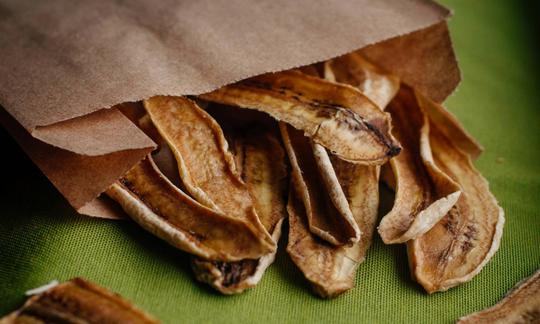

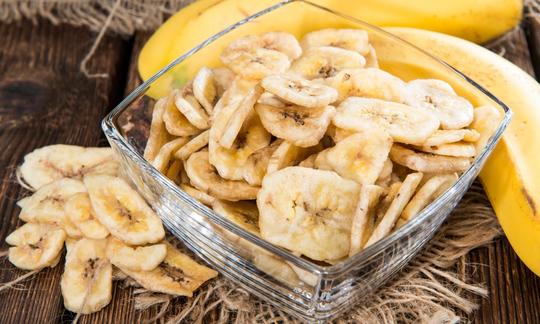

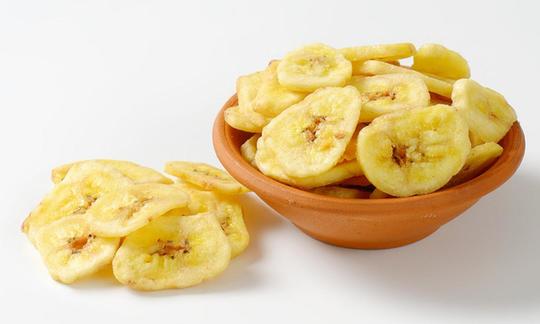

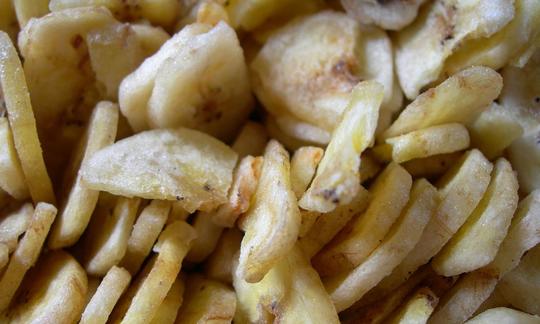

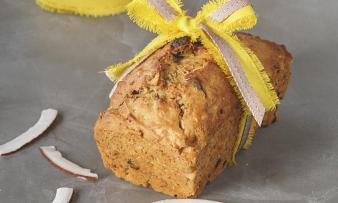





Comments